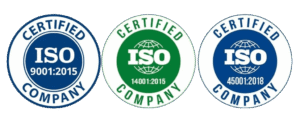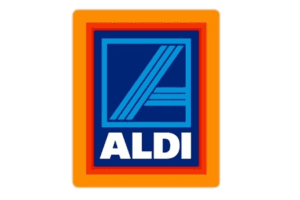High-visibility safety vests significantly improve worker visibility in industrial environments. The following real accidents from construction, warehousing, logistics and roadwork show how lack of reflective PPE contributed to injury or death, and how a vest could have made a life-saving difference:
- Warehousing/Logistics (Canada) – On Nov. 4, 2021, a night-shift security guard at a Brampton, Ontario distribution yard was fatally crushed between a reversing truck and trailer while removing air brake “glad-hand” locks[1]. The driver did not see the guard approaching because lighting was poor and neither the guard nor his vehicle had any reflective markings[1][2]. Ontario safety officials noted that the guard’s death “could have potentially been prevented” if he had been wearing a high-visibility reflective vest[3]. Outcome: Fatality. Industry: Warehousing/distribution.
- Transport/Logistics (Australia) – In a 2024 case, an Australian truck driver was struck and killed during a semi-trailer changeover in a poorly lit yard[4]. Though the employer had supplied high-vis vests and required their use, the victim was not wearing his vest when he walked in front of a colleague’s tractor-trailer. The colleague, in darkness, did not see him in time to stop[4]. The incident highlights that strict enforcement of vest use is critical – the court emphasized that wearing his vest could have made the driver visible and prevented the fatal collision[4]. Outcome: Fatality. Industry: Transport/Heavy vehicle operations.
- Roadwork/Construction (USA) – In 1986 on a highway maintenance crew, a female laborer standing in the roadway to direct a coworker was struck and killed by an oncoming car during early-morning darkness[5]. She was wearing dark clothing and no reflective vest, despite having set up warning signs[6]. Wearing a bright reflective vest in such low-light conditions could have made her much more visible to approaching traffic and might have prevented the crash. Outcome: Fatality. Industry: Highway construction/maintenance.
- Manufacturing (Canada) – At a Toronto paper mill (June 24, 2011), a worker returning from break was walking through a receiving area when a forklift carrying a heavy roll struck his leg[7]. The safety report noted the injured worker “was not wearing a safety vest” and that no pedestrian barriers separated him from forklift traffic[8]. If the pedestrian had been wearing a hi-vis vest and been directed to a marked walkway, the forklift operator may have seen him and avoided the collision. Outcome: Serious leg injury (nonfatal). Industry: Manufacturing (paper production).
- Construction (UK) – In a 2011 UK case, a joiner on an extension build was crushed under nearly two tonnes of plasterboard dropped from an elevated forklift[9]. The worker, guiding the load from below, was not wearing a hi-vis vest and could not see the forklift operator’s signals as the forks ice-up caused the load to slip[10]. UK inspectors pointed out the company should have ensured “good visual contact” between operator and ground crew, noting the victim “should have been wearing a hi-vis vest and standing well away from the forklift” during unloading[11]. Outcome: Multiple fractures and injuries (survived). Industry: Building construction/contracting.
- Road Maintenance (USA) – In July 2023 in Texas, a sprinkler repair worker on the side of a hospital access road was hit by a car that veered onto the shoulder[12]. The crew had no traffic cones or flaggers, and the victim – checking irrigation valves in one leg of the road – was not wearing a safety vest[13]. He suffered fractures and blunt trauma and later died from his injuries. Had he been in a high-vis vest, passing drivers would have been more likely to see him at the roadside, possibly preventing the accident. Outcome: Fatality. Industry: Irrigation maintenance/roadside landscaping.
- Heavy Vehicle Logistics (Australia) – On July 6, 2021 in NSW, a 52-year-old truck driver pulled over at a known heavy-truck changeover area at night. He exited his cab without putting on a hi-vis vest and walked around between parked rigs[14]. An oncoming heavy truck – driving down the middle of the dark two-lane road – struck him[15]. The NSW investigation noted explicitly that “the worker…was not wearing high visibility clothing at the time” and this contributed to the fatality[15]. Clearly, donning the provided vest before walking on the road shoulder could have made him visible to the driver, likely preventing the crash. Outcome: Fatality. Industry: Road transport/logistics.
- Highway Repair (USA) – In Nov. 1992 on I-95, four highway workers were replacing a guardrail when two cars collided ahead, sending one car into the shoulder work zone[16]. None of the workers wore reflective safety vests[17]. A coworker was thrown onto the bridge parapet and fell 35 feet, dying of his injuries, while the others were hospitalized[18]. This tragedy was cited as avoidable if the crew had been wearing hi-vis vests and using proper traffic controls, so that drivers would recognize the work area and slow down[18]. Outcome: One fatality and three injured. Industry: Highway maintenance.
- Port Logistics (USA) – During a night-time roll-on/roll-off cargo operation on a barge (Longshoring industry), a longshoreman was directing a 53-foot container being backed up when he was run over and killed[19]. The area lighting was very poor and the victim “was not wearing a high visibility vest”[20]. An OSHA accident analysis noted that if all deck crew had been required to use retro-reflective vests (and supplemental strobes) under the dim lights, the truck driver would have seen the worker’s position before backing. Outcome: Fatality. Industry: Maritime shipping/warehousing.
- Security/Facilities (USA) – In July 2023 at a Texas disposal facility, a security guard conducting guardrail inspections parked in the shoulder and walked across the road to clean reflectors[21]. He crossed without wearing a hi-vis vest and was struck by an eastbound car[22]. The crash killed him from blunt trauma. If he had worn a fluorescent reflective vest during this roadside task, passing drivers would have had a better chance to see him on foot in the roadway and avoid the collision. Outcome: Fatality. Industry: Private facility security/maintenance.
Actionable Safety Takeaways
- Enforce Hi-Vis Use: Employers must require high-visibility vests (meeting relevant standards) wherever workers share space with vehicles or machinery, including during deliveries, maintenance or traffic control. Simply providing vests is not enough – supervisors must ensure every exposed worker actually wears them[3][4]. Companies should train and remind staff that a vest can mean the difference between being seen or becoming a casualty.
- Train and Monitor: Incorporate hi-vis requirements into hazard assessments and safety briefings. Train employees about struck-by risks and vest standards, then audit compliance. As one safety review noted, it’s “not good enough to do the risk assessment and issue the PPE” – management must have systems to ensure the PPE is used in practice[23]. Regular checks (and disciplinary policies for non-compliance) reinforce that visibility gear is mandatory, not optional.
- Combine Controls: Use multiple visibility measures. In low-light or busy areas add lighting, cones, barriers and spotters to make pedestrians and static equipment obvious. OSHA recommends clear communication signals and keeping workers out of active vehicle paths unless clearly marked and lit[24]. A vest is most effective when used with other controls (like flashlights or strobes at night[24]).
- Maintain Equipment: Ensure reflective garments are in good condition. Replace faded, dirty or worn vests regularly so that colors and stripes remain effective. Workers should use vest features properly (e.g. close them fully, avoid covering reflective tape with jackets).
- Lead by Example: Management and contractors should wear hi-vis too, and enforce the rule even on remote sites. High-visibility clothing requirements often align with legal duty to control hazards; failures can lead to heavy fines or convictions (as seen in the Canadian and Australian cases[25][4]). Emphasize that visibility PPE is a cost-effective control: avoiding even one serious accident saves lives and prevents legal consequences.
By consistently applying these measures – providing approved high-visibility vests, insisting they are worn, and combining them with good lighting and traffic controls – employers can markedly reduce struck-by injuries and create a stronger safety culture on the job.
[1] [2] [3] [25] Logixx Security found guilty in death of worker | Canadian Occupational Safety
[4] [23] Workplace Relations News – April 2024
[5] [6] Accident Report Detail | Occupational Safety and Health Administration osha.gov
[7] [8] Blog Post #446 – Cascades Canada ULC Fined $80,000 after Worker Injured – HRSGroup – Providing Occupational Health and Safety Training
[9] [10] [11] Joiner crushed under two tonnes of plasterboard | Construction Enquirer News
[12] [13] Accident Report Detail | Occupational Safety and Health Administration osha.gov
[14] [15] Heavy Vehicle changeover fatality (6 July 2021) | SafeWork NSW
[16] [17] [18] Accident Report Detail | Occupational Safety and Health Administration osha.gov
[19] [20] [24] Section I: Vehicular Accidents – Summary No. 4 – Night Time Ro-Ro Operations | Occupational Safety and Health Administration
[21] [22] Accident Report Detail | Occupational Safety and Health Administration osha.gov










